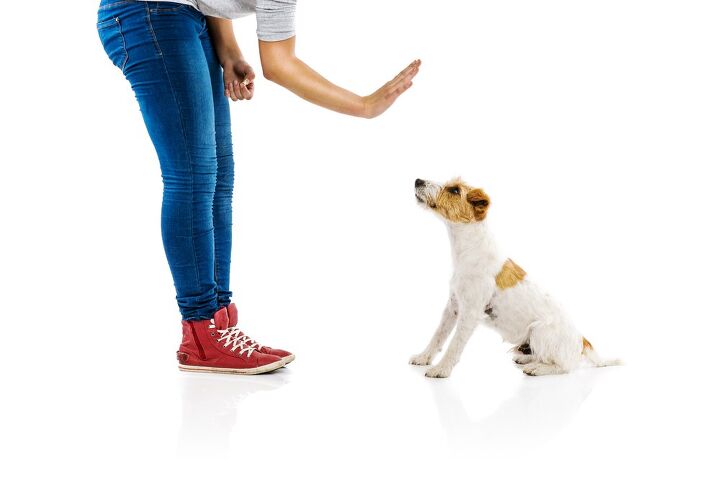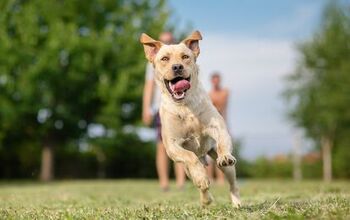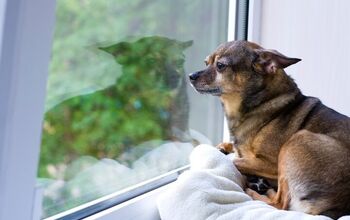Don’t Want to Train? Use Management Instead

When your goal is to modify an undesirable behavior — whether it’s from your dog, your kids, or yourself — you always have two options. You can manage the situation, or you can train the individual to behave differently. While training gets all the attention, management shouldn’t be overlooked.
The Difference between Management and Training
Never heard of management? It’s actually quite simple. Management means you create a situation in which your dog’s undesirable behavior simply can’t occur. You’re not training the dog to do anything, but rather manipulating the environment to prevent the problem from happening. Buster barks out the window? Close the blinds. Luna resource guards her bones? Simply take away the bones.
Related: A Pro Shares How to Housetrain Any Dog
And then there’s training. When you train, you teach the individual how to engage in a more desirable behavior instead of the old, frustrating one. This naturally takes more time and practice than management, as you’re teaching your dog (or spouse, child, or yourself) a new way to behave. For instance, when Buster barks out the window, you teach him a solid recall, so he runs to you instead of fixating at the action outside. If Luna resource guards, you (possibly with the help of a trainer) can methodically teach her to tolerate having her bones removed.
In dog training and in life in general, both management and training have their places. They may also complement each other when working to overcome a behavior issue. It’s up to you to decide whether management, training, or both fit your needs. Let’s look at an example.
Related: Curb Your Dog’s Destructive Chewing
Management and Training in Action
Problem: Roscoe gets underfoot and tries to counter surf while you’re cooking in the kitchen.
Management Strategy: Block Roscoe’s access to the kitchen. There are several ways to do this.
- Use a barrier such as a baby gate to prevent him from entering the kitchen.
- If your kitchen is open to the main living area, you can put him in his crate or lead him to another room with a long-lasting chew toy to keep him busy while you cook.
- Create a comfortable spot in or near the kitchen to tether him. You’ll have a leash (secured to a stable object like a banister) and his dog bed set up in a spot where he can see you in the kitchen. Clip him to the tether and give him a chewy on the bed.
- Get delivery instead of cooking. Just make sure Roscoe doesn’t jump on your dining table!
If managing the situation is sufficient for your needs, it’s perfectly fine to stop there. Management is limited, however. It will stop the counter surfing, but it generally doesn’t teach the dog to be polite. In many cases, using baby gates and other management techniques is a great starting point until you get a training protocol in place. This protocol is where the real work is done, as training will show your dog how to replace his undesirable behavior with a new, polite one.
Training Strategy: Teach Roscoe to go to his bed while you cook.
The Place cue, meaning “go to your bed and stay there until I release you,” is incompatible with kitchen scavenging. If Roscoe is firmly on the dog bed, he can’t be counter surfing. Whereas management simply prevents the dog from physically doing the bad behavior, Place teaches him what he should do instead. By training with a rewards-based approach, the dog is able to learn practical life skills, and it reinforces how fun it is to listen to your cues.
For almost every undesirable behavior, it’s wise to consider how both management and training can help your dog be on his best behavior.

Kate Naito, CPDT-KA, is a dog trainer at Doggie Academy in Brooklyn, NY, and author of the training book, "BKLN Manners." She draws upon her experience as an educator and dog trainer to apply positive training techniques to a challenging urban environment. Kate is a rescue advocate drawn to special-needs dogs and currently has two Chihuahua mixes, Batman and Beans.
More by Kate Naito























